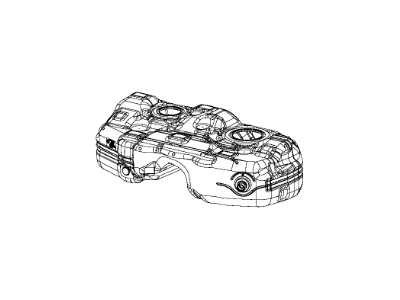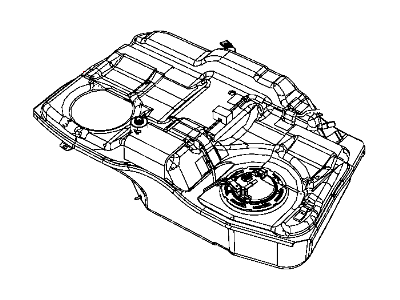×
- Live Chat
- 1-888-511-3595

My Garage
My Account
Cart
Genuine Chrysler 200 Fuel Tank
Gas Tank- Select Vehicle by Model
- Select Vehicle by VIN
Select Vehicle by Model
orMake
Model
Year
Select Vehicle by VIN
For the most accurate results, select vehicle by your VIN (Vehicle Identification Number).
11 Fuel Tanks found
Chrysler 200 Fuel Tank
The Fuel Tank actually providing the fuel and is also the location of the electric fuel pump and the fuel gauge sender on Chrysler 200 vehicles. They serve several purposes, one of which is to help in the Evaporative Emission Control System (EVAP) to prevent those fuel vapors from escaping. Many of these tanks are made of metal or plastic where metal tanks have stamped and welded parts and the plastic ones are blow-molded HDPE. To prevent any possibilities of corrosion and other harm, factory leak testing is also carried out while new locking rings and seals are also given. Also, large capacity fuel tanks, made of military specification polymer, provide up to 500 additional road-miles of driving range, and are immune to rust and corrosion unlike steel.
Looking for affordable and high-quality auto parts? Then you have already arrived at the proper online shop. We offer all Chrysler 200 Fuel Tank at great affordable prices. Moreover, all genuine Chrysler 200 Fuel Tank come with a manufacturer's warranty. In the long run, you would realize you have saved a lot of trouble and money with OEM parts from here.
Chrysler 200 Fuel Tank Parts Questions & Experts Answers
- Q: How to Remove and Install a Fuel Tank on Chrysler 200?A: The following procedure is much easier to perform if the fuel tank is empty. If the fuel tank isn't empty or nearly empty, you can siphon fuel from the tank with a siphon kit, available at most auto parts stores. NEVER start the siphoning action with your mouth! Relieve the fuel system pressure. Disconnect the negative battery cable from the remote ground terminal or battery. Raise the rear of the vehicle and support it securely on jackstands. If you're working on an AWD model, remove the driveshaft and the rear differential electronically controlled clutch. Loosen the hose clamp and disconnect the fuel filler hose from the fuel tank. Unplug the electrical connector in the fuel pump module harness. Disconnect the fuel line and EVAP line quick-connect fittings, both of which are located at the front of the fuel tank. Remove the close-out panels at each side of the fuel tank. On convertible models, remove the two front bolts from the cross braces and move the braces out from under that fuel tank. Remove the exhaust pipe from below the fuel tank. Support the fuel tank with a transmission jack or with a floor jack. If you're using a floor jack, put a piece of plywood between the jack head and the tank to protect the tank. Remove the fuel tank support strap bolts and carefully lower the fuel tank from the vehicle, making sure no hoses or wiring harness are still attached. Installation is the reverse of removal. Tighten the fuel tank strap bolts securely. Start the engine and check for leaks at any fuel line connectors that were disconnected.


























